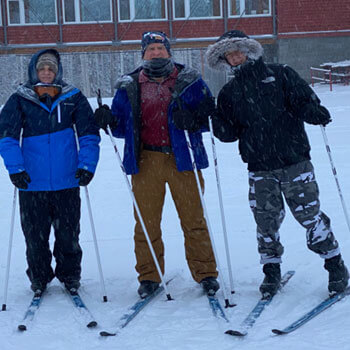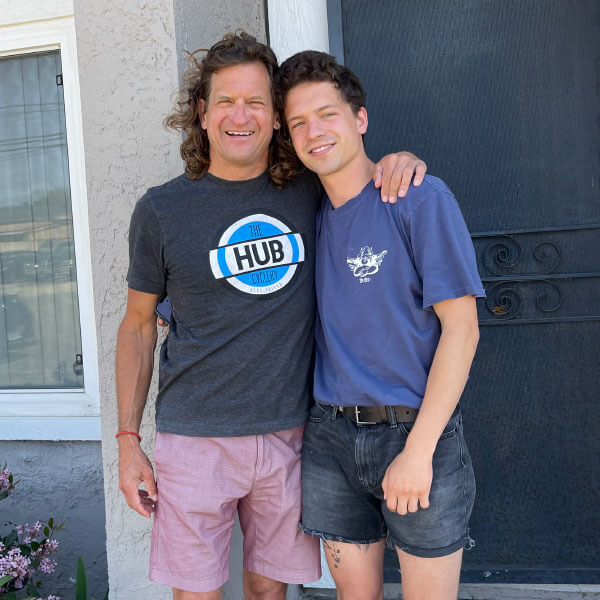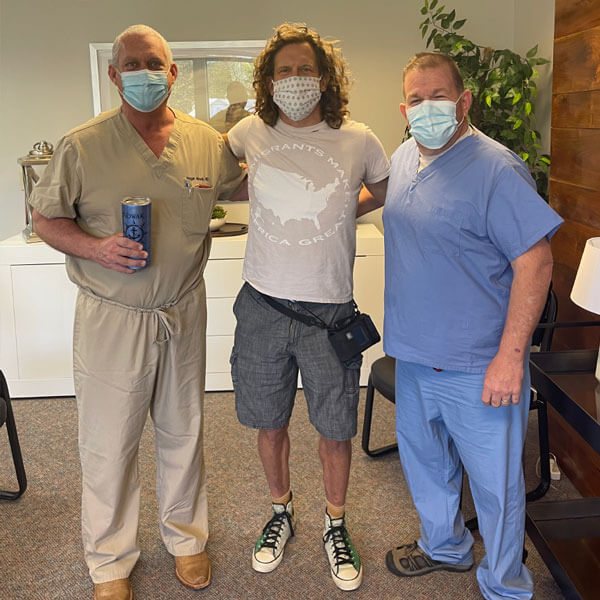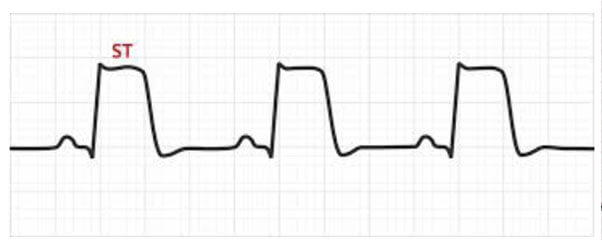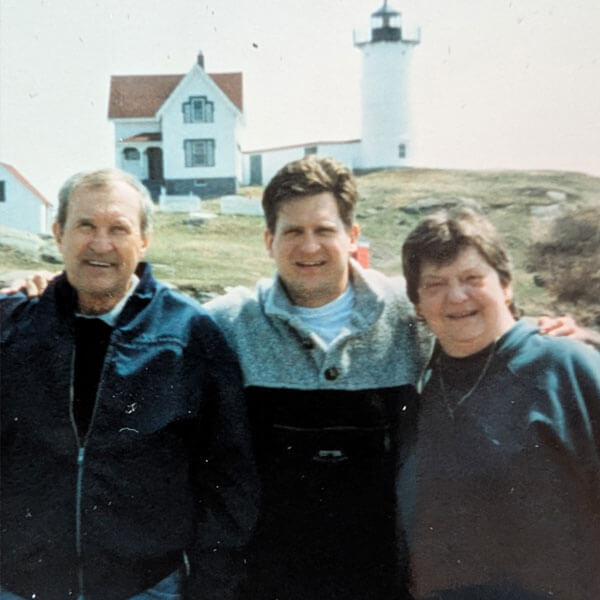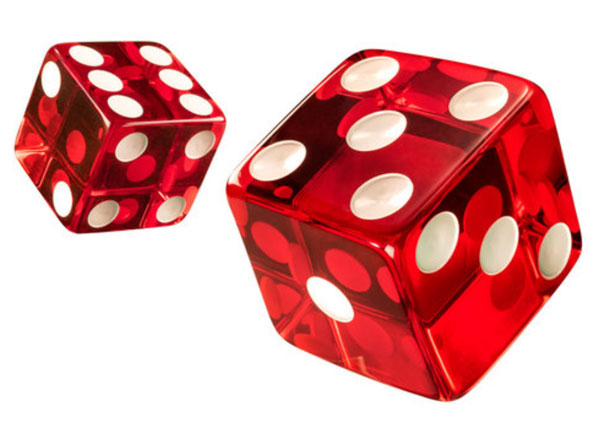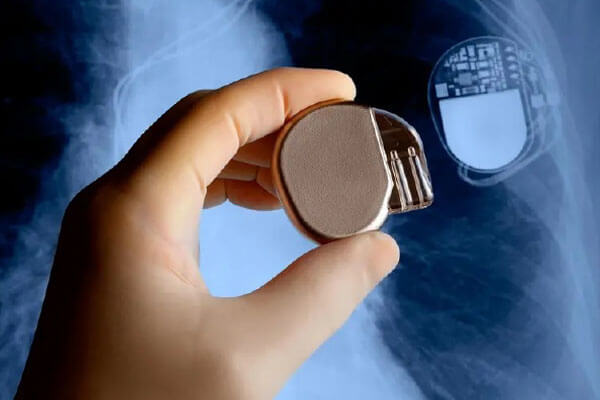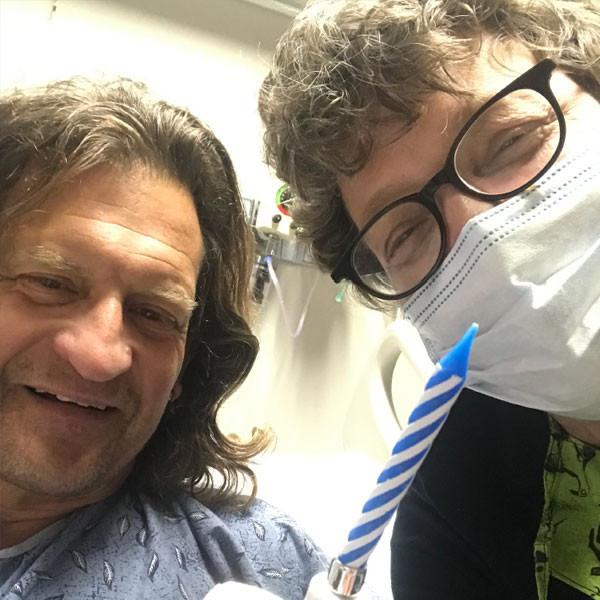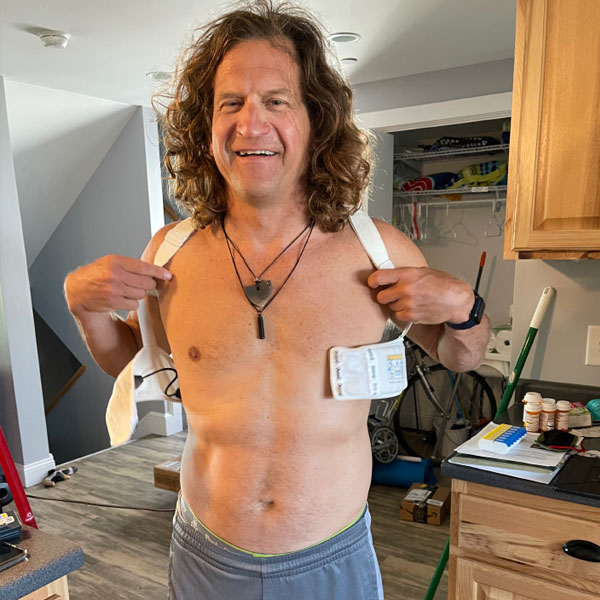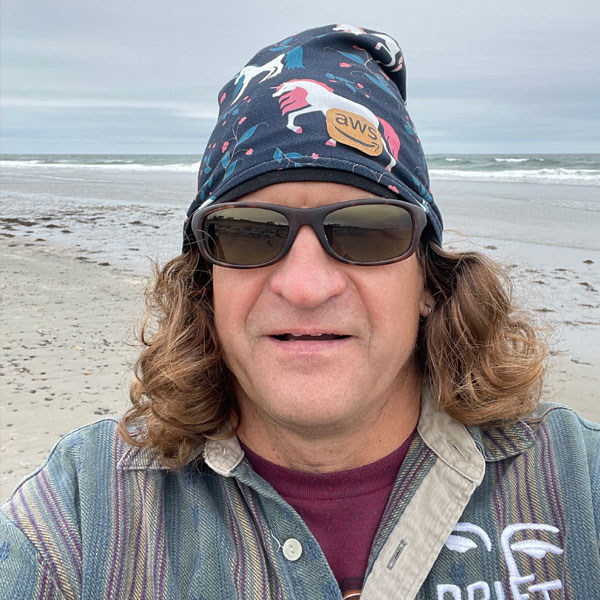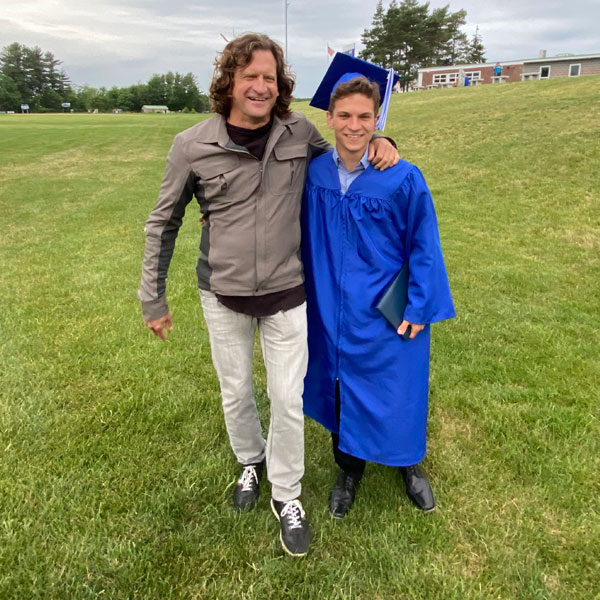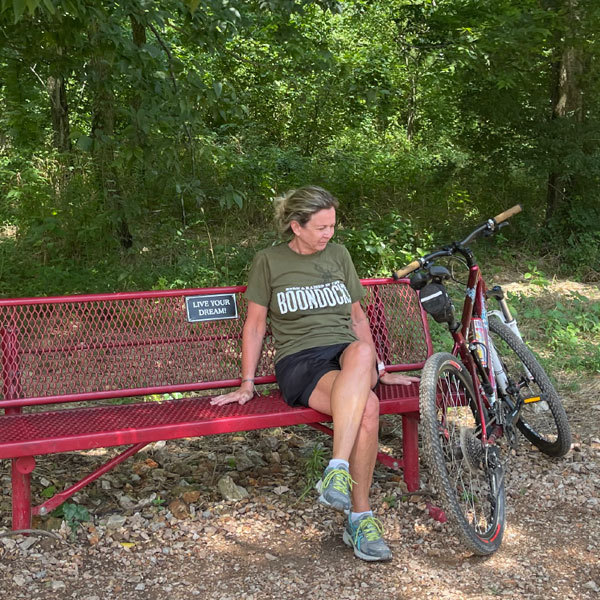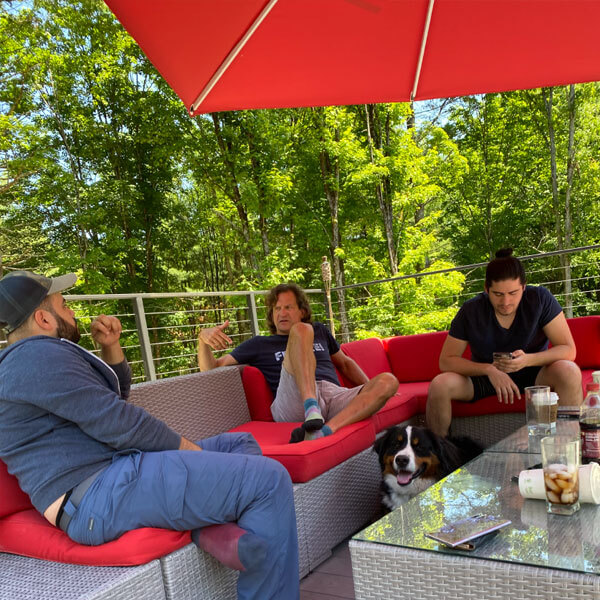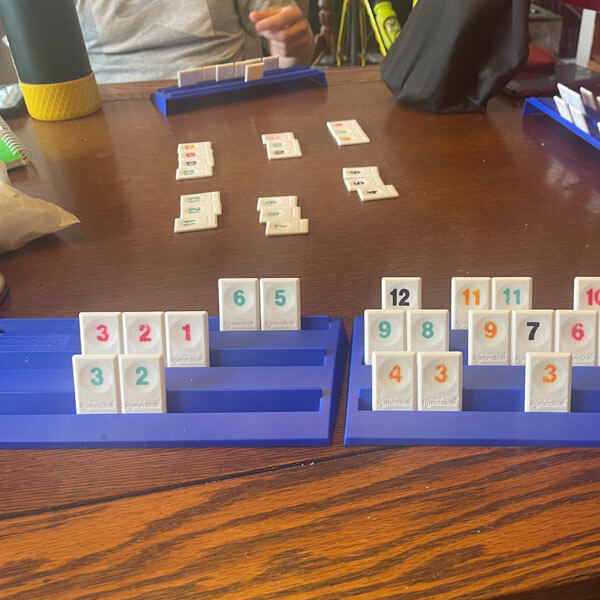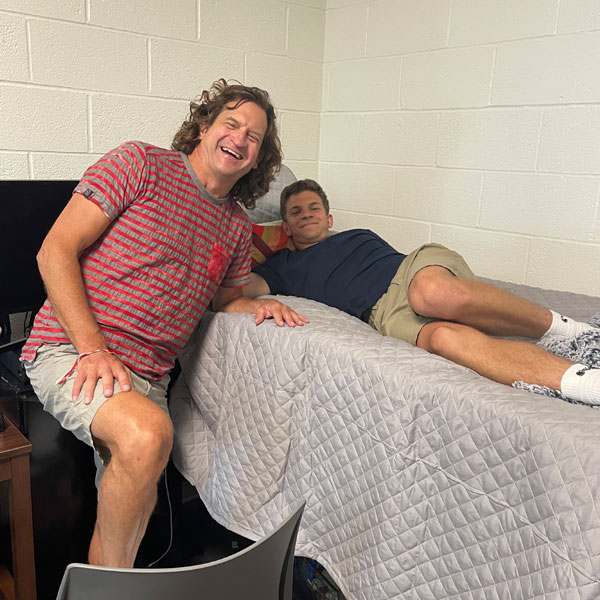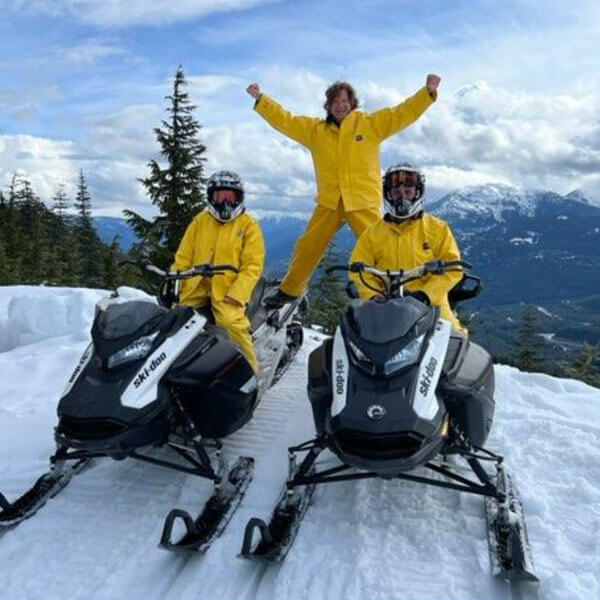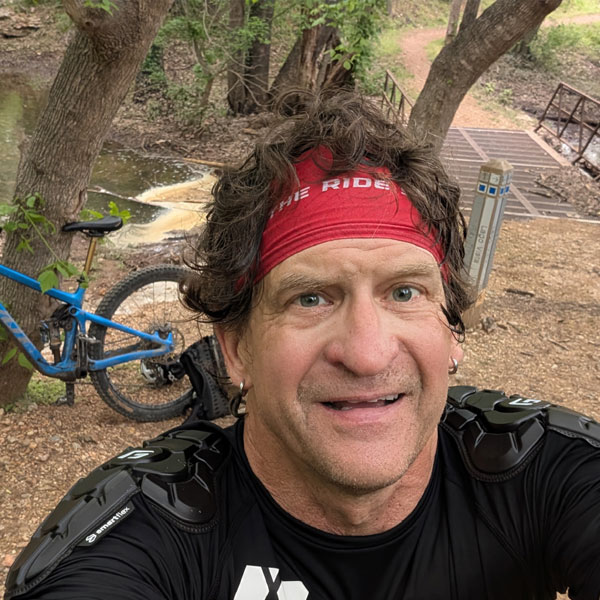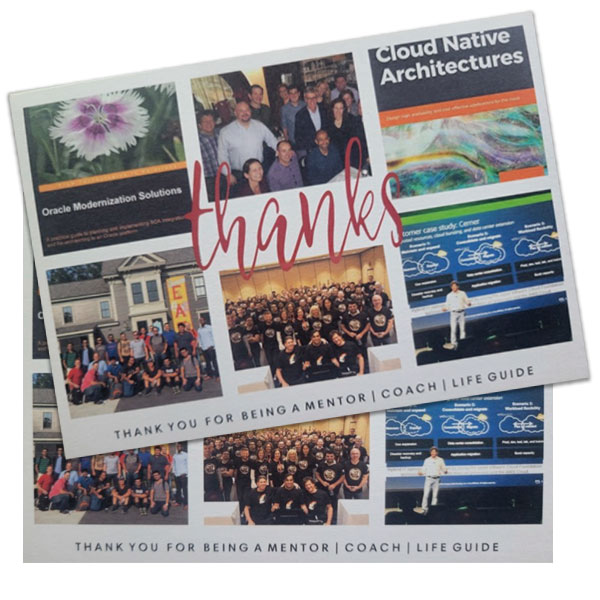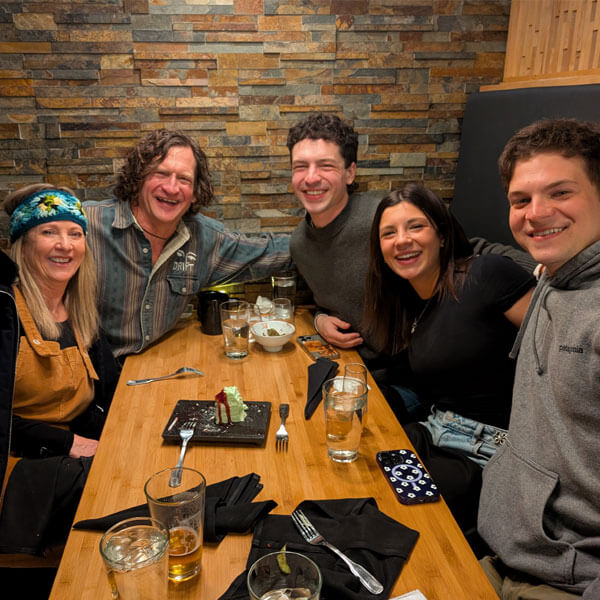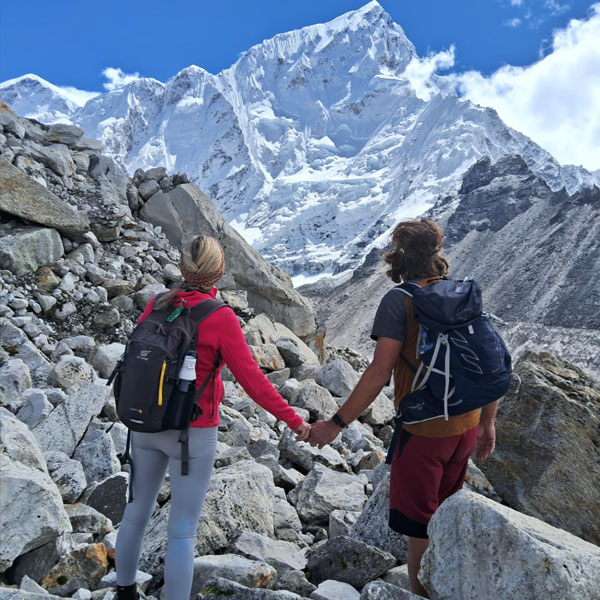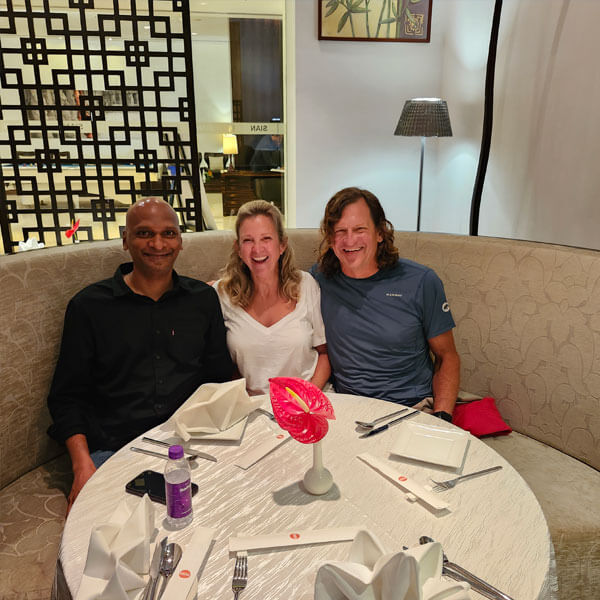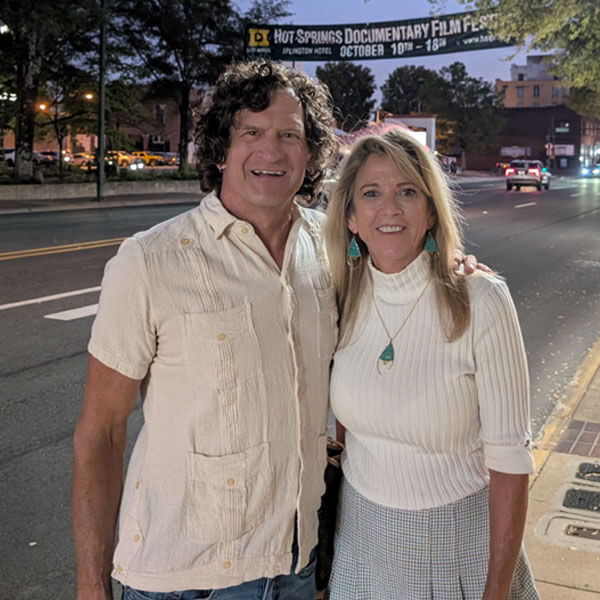Tom’s Heart Timeline
Life is a brittle, ephemeral phenomenon with a series of seemingly random events that we build a narrative around to keep us sane. This is a story of missed opportunities, mishaps, misdirection, and unpredictable consequences. You rarely get second chances—seize them, don't let them slip away.

Extreme Activities Continue
Two weeks before the heart attack, Tom paddle-boarded five miles in the ocean and hiked twelve miles with 3,000 feet of vertical climb in 90-degree heat in the Los Trancos Open Space Preserve with his girlfriend Natali. His running times had slowed from 7-minute miles to close to 10 minutes, but he attributed this to age.
19th Doctors Office – Misdiagnosed as “Panic Attack”
Tom told his physician’s assistant, “Something is definitely wrong.” An EKG was performed and came back showing his heart was “fine.” When Tom experienced a “fight or flight” response and rushed out of the office, the last thing Tom hears from the doctor’s office stay was
‘you didn’t pay your $15 co-pay’.
19th Ambulance – First Ambulance Ride
19th Portsmouth Hospital – Widowmaker Heart Attack Diagnosis
Tom arrived at Portsmouth Hospital and was diagnosed with a 90% blockage of his LAD (left anterior descending) artery—known as a “widowmaker” heart attack with only a 12% survival rate. He called Carmelo from the hospital to tell him it was too late for the Duke tests. Emergency stent procedure was scheduled immediately.
19th During Stent Procedure – Vision of His Deceased Mother
During the procedure, Tom experienced a vivid vision: walking into a bar reminiscent of his mother’s favorite spot in Wisconsin. The bar was elegant with mahogany and a massive liquor collection. His mother sat at the bar drinking whiskey, neither beckoning nor pushing him away—just ambivalent. Then his body violently convulsed on the metal table.
19th Post Procedure – Cardiac Arrest, Rethrombosis
After the stent was placed, Tom woke in excruciating chest pain. He told nurses “something is wrong” but was told it was normal discomfort from the procedure. The stent had not adhered properly to the artery wall, causing rethrombosis—the blockage went from 90% to 100%. Tom went into cardiac arrest, oscillating between VTach and VFib for eight minutes. He received 8-12 defibrillator shocks. His ejection fraction dropped to 15% (normal is 50-70%). Survival rate for cardiac arrest: 25%.
Hospital Stay: Six Days of Uncertainty
Day 2 “Rolling the Dice” – Medication Removal
Two days after the heart attack, the hospital staff informed Tom they would remove two IV medications that were helping control his VTach episodes. The physican assistant (PA) came in and said it was “standard operating procedure” and they were going to “roll the dice.” Tom cried uncontrollably, terrified of another cardiac arrest.
Day 6 – Ejection Fraction Improves to 30%
After six days, Tom’s ejection fraction had risen from 15% to 30%—a miraculous improvement. He was able to walk down a long hallway and up a flight of stairs (with breaks). He was ready to be released. The discharge nurse casually mentioned: “You are lucky. This is the third time rethrombosis has happened in the last two weeks. That is strange.”
First 90 Days: Three Months of Terror
Tom experienced daily panic attacks and PTSD episodes three times every night. He couldn’t sleep without sleeping aids. His deceased mother “visited” him on several occasions. Natali wasn’t allowed to leave his side—not even for showers, naps, or using the bathroom. Tom refused to do anything on his own.
Three weeks post-discharge the cardiologist office has “no record”
At Tom’s first follow-up appointment with the cardiologist that performed the stent procedure, his medical staff indicated they had no record of him. The nurse asked, “Who are you?, Why are you here? Do you have the correct office?”. She returned with a blank sheet of paper and asked Tom to “start from the beginning, and explain everything in detail”. Neither the the cardiologist or his primary care physican, Dr, Gregory Morrissey, made an effort to see Tom after the incident.
Medical Records Battle
Tom tried to obtain his medical records to share with his cardiologist friend at Duke. His primary care office maintained they had 30 days to release records. After multiple visits by Natali and friend Tom Ludwig, records were finally released only after threatening lawyer intervention.
One Month Post – Ejection Fraction Reaches 50%!
Tom’s ejection fraction rose from 30% to 50% within one month—a miraculous recovery. The LifeVest was removed. Hope was restored. This improvement was thanks to: persistent twice-daily three-mile walks on the beach, sleeping 12 hours a day, breathing exercises, impromptu visits from friends, meditation, hours of gin rummy with Natali, and absence of work stress.
First Major Panic Attack While Traveling
Tom and Natali hiked 12 miles in 90-degree heat to view the Corolla Wild Horses. During dinner, Tom felt the same low blood sugar sensation from before the heart attack. His heart raced, and his mind spun into a vortex of despair. He was 100% convinced he was having another heart attack. They left immediately to get closer to a hospital.
Exploratory Cath at Duke University
Tom’s friend “Haymaker” at Duke insisted on an exploratory cardiac catheterization to review the stent procedure and echo-cardiograms. Bob, an interventional cardiologist, explored Tom’s heart for over two hours and concluded his arteries were unobstructed. This was a pivotal moment—empirical evidence that Tom was physically healed. It restored some trust in medical professionals after so much incompetence.
Second Major Panic Attack & ER Visit
During a stopover in Nashville visiting a college roommate, Tom had another panic attack during dinner. At 11 PM, convinced he was having a heart attack, Natali drove him to the hospital—ironically, one where she had worked. From 11 PM to 7 AM, Tom endured multiple troponin tests. One person died in the hallway, a heroin addict had a seizure, and someone with a rare contagious disease from Congo was admitted. The doctor recommended an exploratory cath. Tom and Natali insisted on leaving.
Moving Forward in Northwest Arkansas
Two weeks before the heart attack, Tom had committed to renting a home in Bella Vista, Arkansas for a year. With both sons in college, he was looking for a change—the mountain biking drew him to the area. The move via Raleigh was fraught with anxiety. Natali’s mantra: “You are as nervous as a cat on a hot tin roof.”
Found Exceptional Mental Health Care
Tom immediately found a psychologist and psychiatrist in Arkansas. Despite AR’s reputation for mediocre healthcare, he found the best physicians who took time to listen. Started on Prozac, then switched to Pristiq (an SNRI that provided the serotonin and norepinephrine support he needed). A behavioral therapist named James called Tom “the world’s most interesting person” and asked Tom for advice about his other patients. The teams at Dauntless Psychiatry and Northwest Rehab & Wellness were integral to his recovery.
Art of Living SKY Breath Meditation Weekend
Friend and coworker Bikash Behera gifted Tom an Art of Living workshop. The weekend was insightful, powerful, soothing, impactful, and transformative. It was an amalgamation of meditation, therapy, transcendent being, breathwork, and hypnosis—another pivotal moment in subconscious recovery. Tom adopted Eckhart Tolle’s philosophy: when faced with a challenging situation, either remove yourself, fully accept it, or change it.
Visit to Catskills – Nervous About Distance from Hospitals
Tom spent time at his friend Ale’s house in the Catskills but was nervous the entire time—he wasn’t within 50 miles of a major hospital. He looked for hospital signs incessantly when traveling. This visit was crucial to recovery as Ale was transparent and honest: “I’ve never seen you sit for more than 10 minutes. There’s a positive side—you’re constantly moving, doing, achieving. But it’s time for you to relax.”
Questioning Cognitive Abilities
Did Tom’s intellect get impaired during the 8 minutes of cardiac arrest? Was his balance affected by loss of blood flow to the brain? He questioned his cognitive ability, memory, physical stamina, and coordination through playing card games, darts, chess, and pool. He loathed being on medication—he had taken pride in “not being on anything” before the heart attack.
Extensive Travel and Adventure Resume
6 Months Post
Breaking Through Mental Barriers – “Whatever It Takes”; Tom resolved to start mountain biking beyond the 1.7-mile Tweeter Bird green trail circle. The mantra for the first year of recovery: “This shit has to stop.” It was imperative to saturate himself in everything he had enjoyed before the heart attack. Tom and Natali embarked on an odyssey of scuba diving, hiking, motorcycle riding, snowboarding, four-wheeling, snowmobiling, biking, and dancing in exotic lands and at home in NWA.
8 Months Post
Return to Adventure Travel
Tom and Natali traveled to Bora Bora, Whistler for skiing, and Croatia for diving and motorcycling. Each trip was a test of physical and mental recovery. Nightmares, visions, and distress continued but were abating. There was lots of anger, indignation, and regret—but also growing confidence and joy.
One Year Anniversary
Embracing a “New Normal”; Getting back to ‘normal’—a new normal. This viewpoint made Tom happy, joyful, and optimistic. There is a time of play, a time to be born (again), a time to sow, and a time to reengage. Tom resisted the temptation to say “f*** it” to work and abandon all aspects of normal life. Life, including work, now had a purpose beyond achieving temporal success and pleasure. He took time to appreciate those around him and relax into the moment.
Reconnecting with Mentors Through Cards
Inspired by an LSD experience, Tom sent personal thank-you cards to 40 mentors, coaches, and life advisors who positively influenced his life. This gesture led to rekindling friendships, advising on startups, collaborating on pay-it-forward endeavors, and motivation to write books. The cards read: “Your virtues, selflessness, and thoughtfulness enabled me to exploit my strengths throughout my personal and professional life.”
Three Years Post Heart Attack
60th Birthday
Tom turned 60, celebrating with an extended, multiple-city, multi-day, month-long celebration. He completed “60 at 60″—60 miles of mountain biking over three days in NWA during his birthday week. In June, his best friend from age 14 held a 60th birthday bash in the Bay Area with a band. In October, a nine-day Park City and Moab mountain biking extravaganza with three close friends.
Everest Base Camp Trek
Tom completed the Everest Base Camp trek: 130 kilometers (80 miles) round trip, with 2,865 meters elevation gain, reaching 5,545 meters (18,192 feet). The 12-day trek was strenuous but exhilarating—proof of how far he’d come in his recovery. He hiked mostly in shorts and a t-shirt, dispelling myths about the trek’s difficulty.
Reconnecting with Work Friends Through Mountain Biking
Tom traveled to the Catskills, India, and Park City/Utah to commune with close friends established at work. Enduring relationships make life worth living. He reflected on where he met most of his closest friends: 8 from work, 1 from education, 1 from fitness. These unconditional connections provide meaning to life.
Champion the Challenges & American Heart Association Partnership
Tom engaged with the American Heart Association, Sidekick Platform, and Champion the Challenges to create a heart and stroke application called “Tom’s Heart & Stroke AI Sidekick”—utilizing AHA public and private data including videos, infographics, audio, articles, care plans, and assessments. The mission: create a cardiac convalescence personal advocate in your pocket, powered by AI and the clinical, evidence-based knowledge needed to navigate heart health recovery.
Champion the Challenges 2025 CarePlan Entry
Tom’s Heart submitted an entry to the Champion the Challenges 2025 CarePlan Challenge for the Heart and Stroke AI Sidekick mobile application—the only direct-to-patient cardiac recovery digital platform powered with clinical, evidence-based knowledge. Features include: AI-powered assistant, integration with fitness watches and rings, doctor records, pharmacies, medication tracking, progress reports using gamification, recovery stories, and American Heart Association resources.
Four and a Half Years Later: Forever Changed
Tom is back to 80% physical capacity (told this is his max) and 90% mentally healthy. It remains challenging to suppress or annihilate the emotional trauma. He was down to 20% capacity physically, emotionally, and mentally immediately after the incident. The process of recovery was arduous and fraught with setbacks. Tom continues mountain biking with drops and jumps, manages his heart medication, and lives each day with gratitude. More vulnerable and fragile—but also more appreciative of life, relationships, and each moment.
Key Lessons Learned
• Get help from professionals – Psychologist, psychiatrist, physical therapist, cardiologist
• PTSD and panic attacks are real – Never dismiss mental health challenges
• Just breathe – The power of breathing is unfathomable
• Connection matters – Friends help with physical, mental, and emotional aspects
• Friends in high places – Having people who know and believe in you is mandatory
• The US Healthcare system needs improvement – Be your own advocate
• Adjusting to medicine takes time – Be patient with the process
• Writing is cathartic – Processing trauma through words helps healing
”"You rarely get second chances—seize them, don't let them slip away. It is good to be back, and 'It could have been worse.'"
Tom Laszewski, Heart Attack Survivor

